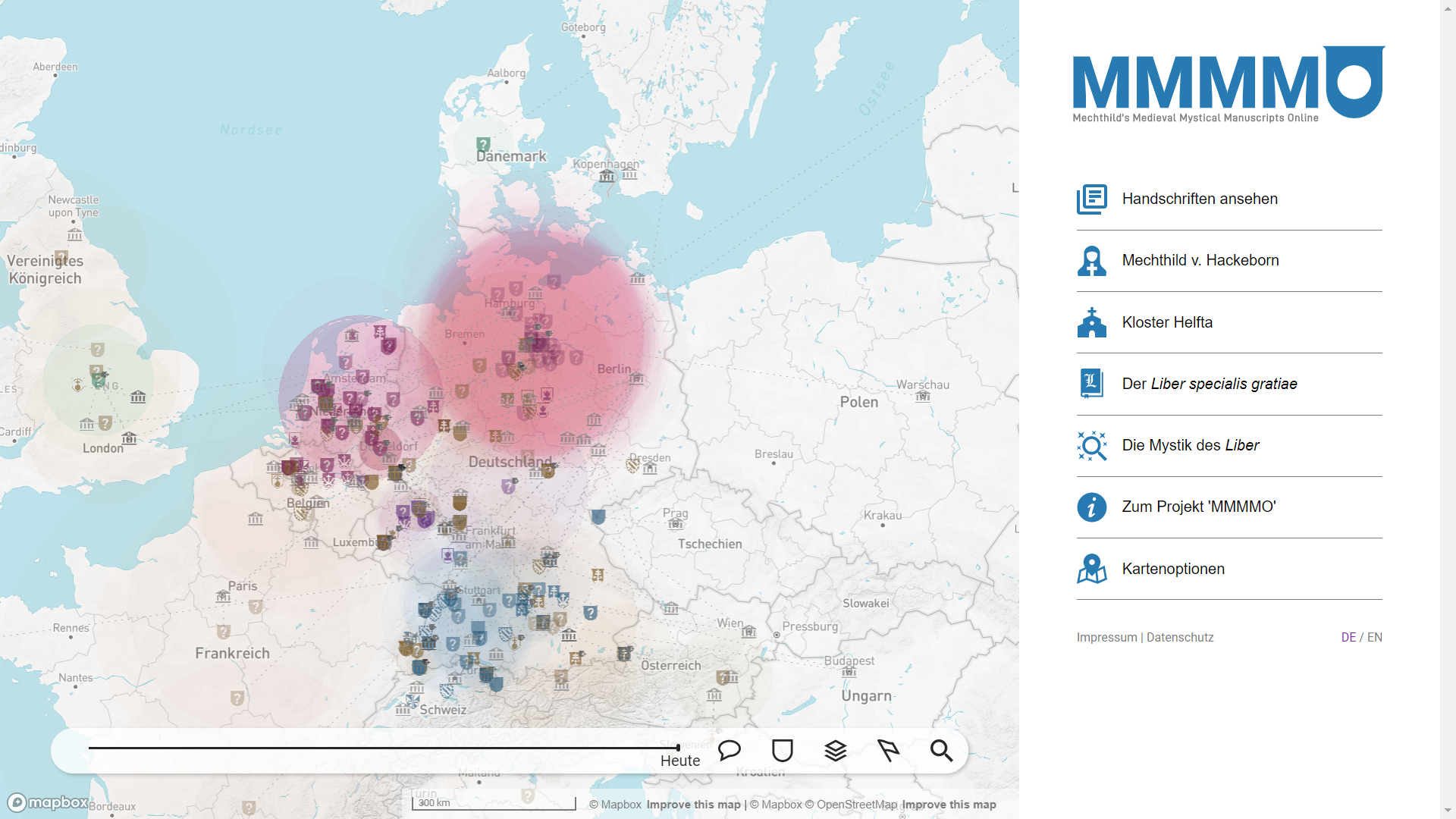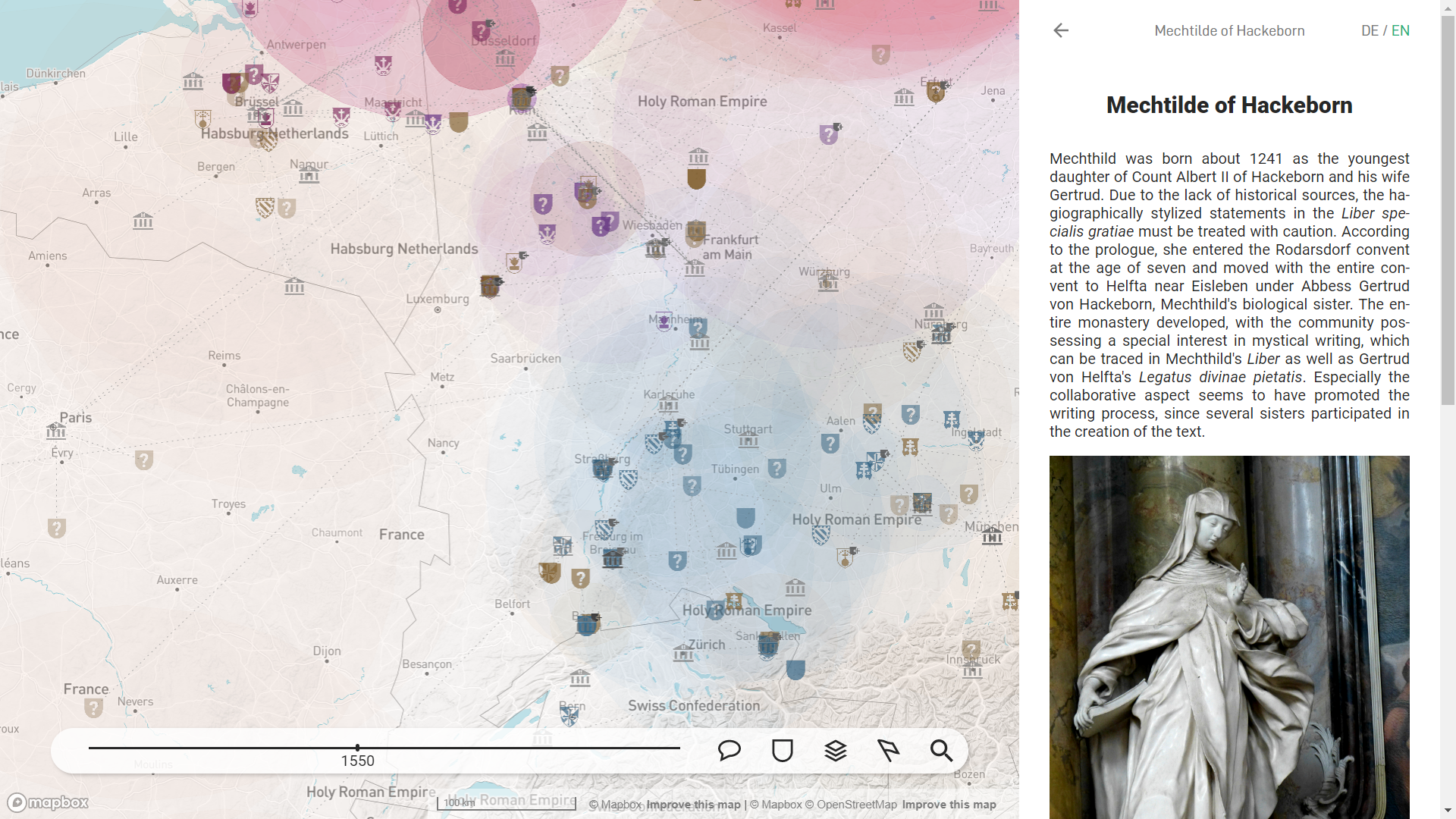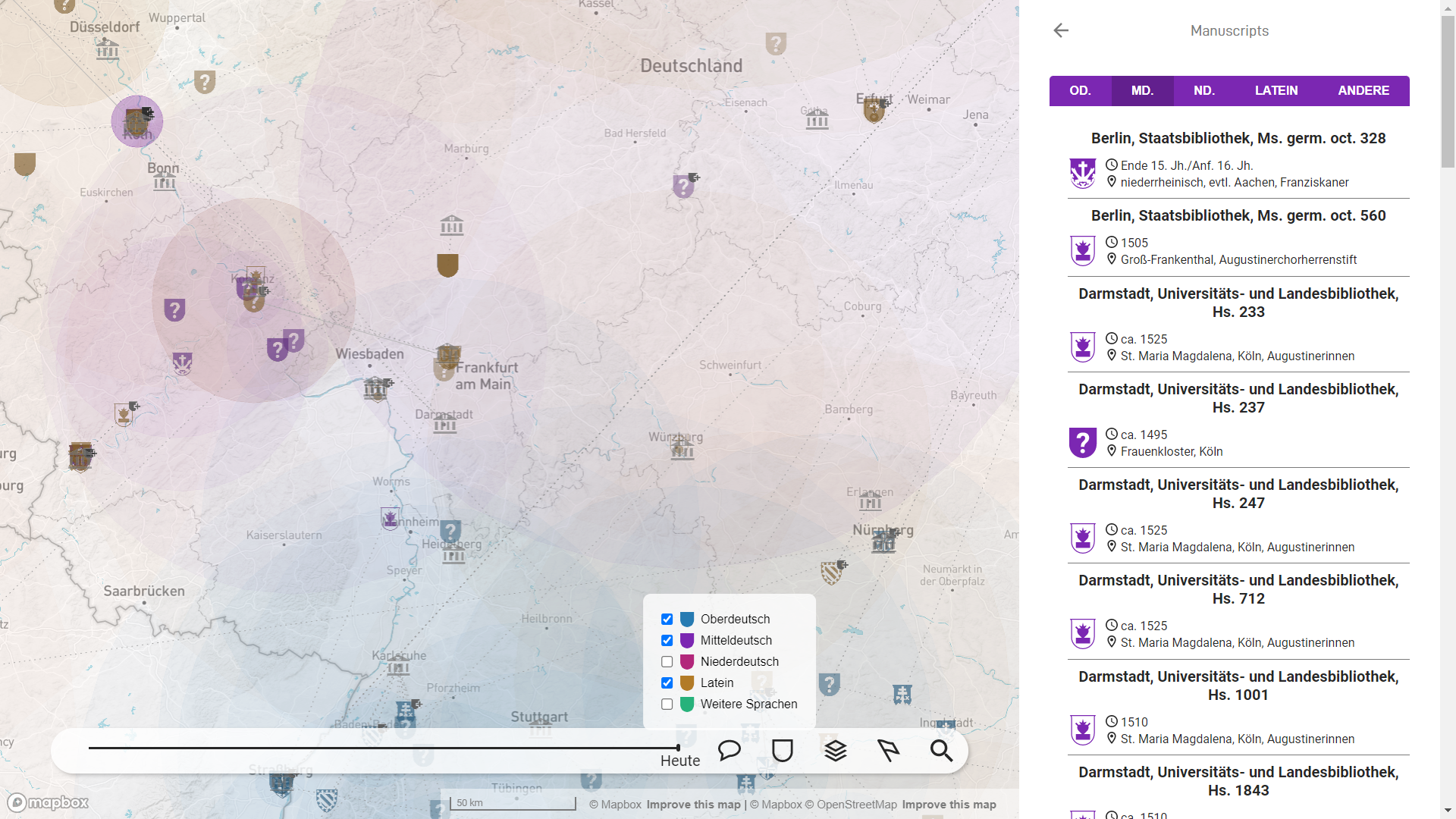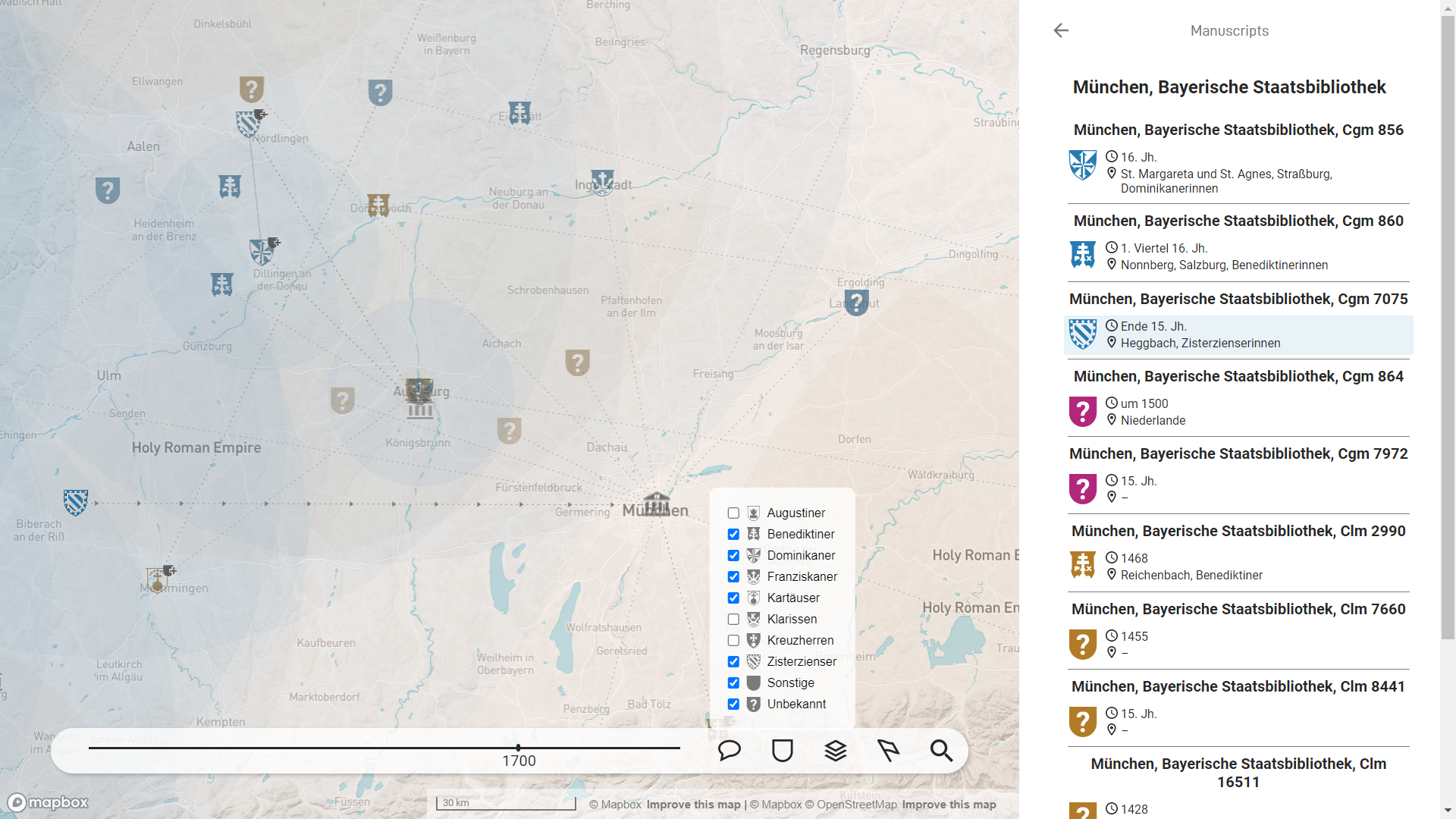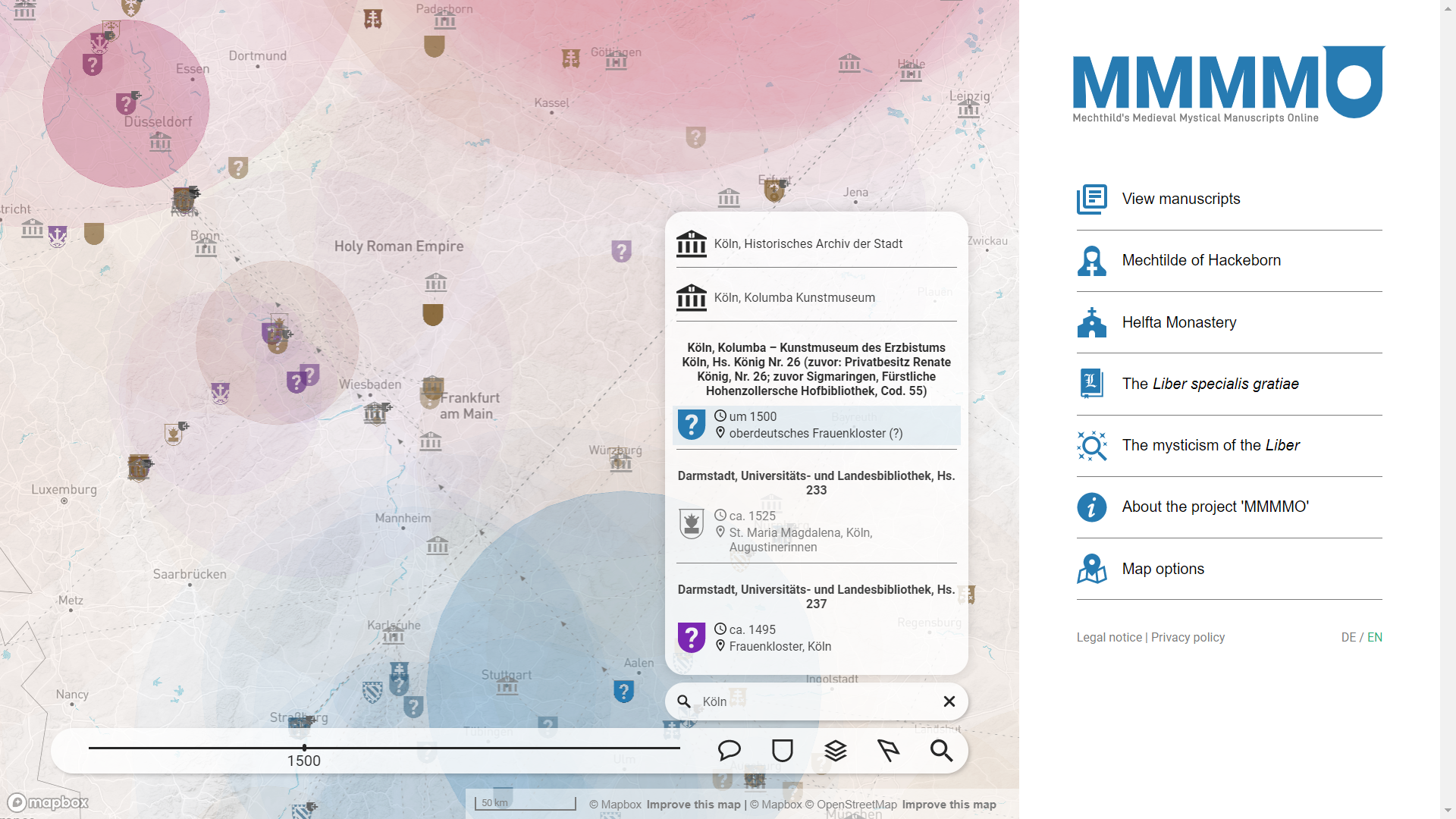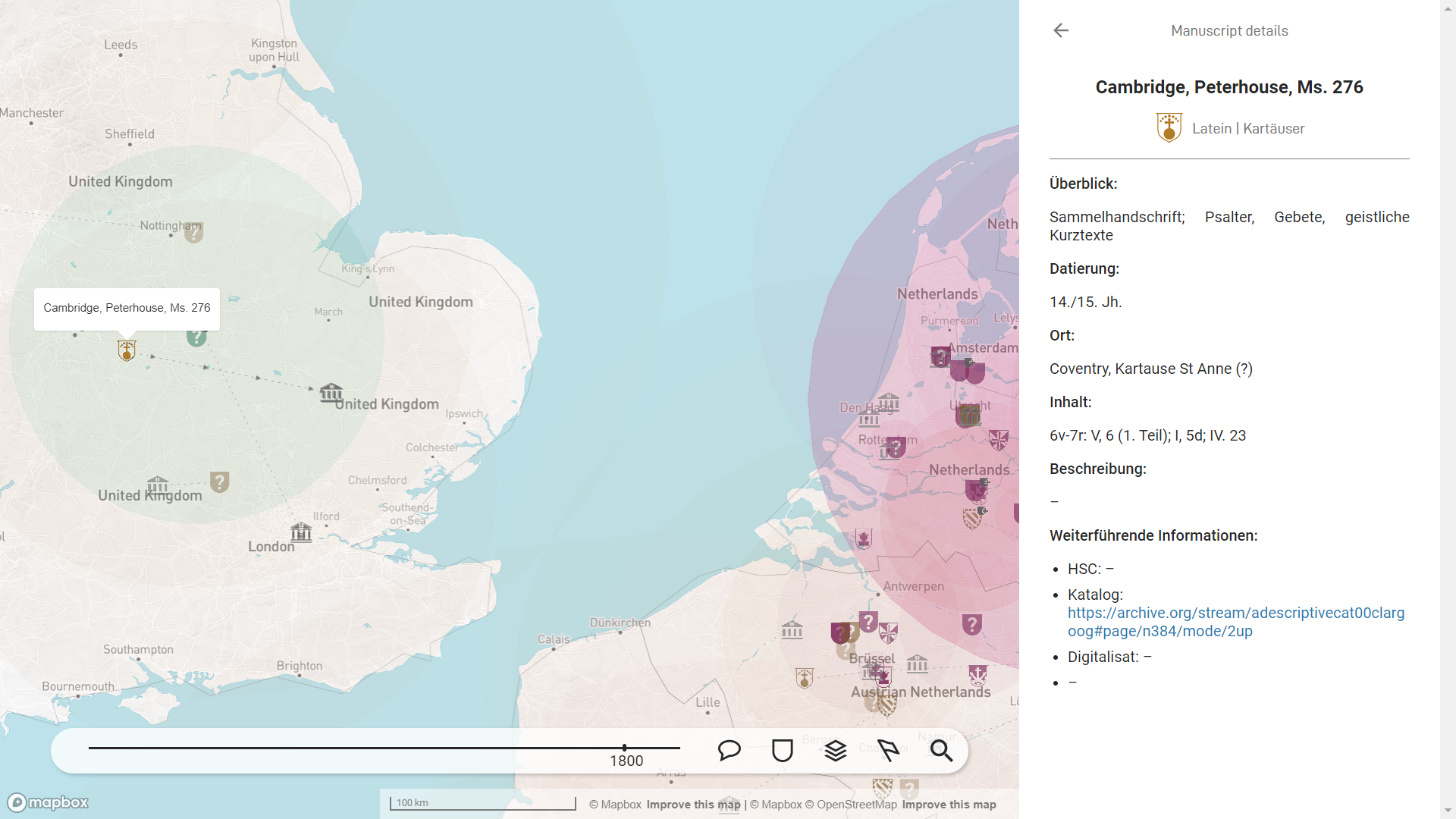MMMMO
'MMMMO' (Mechthild's Medieval Mystical Manuscripts Online) is an interactive map of the transmission of late medieval manuscripts using the example of the Liber specialis gratiae by Mechtilde of Hackeborn. The Liber is one of the most widespread women's mystical texts of the late Middle Ages. This is not only evident from the number of Latin and German transmissions. Copies and translations of the Liber have been found throughout Europe. It is interesting that the transmissions do not take place in so-called "full texts". Rather, individual passages and chapters are embedded in different constellations and variations in a new context, for example in prayer books, didactic text collections, or as reading material for devotions. These various forms of reception show a polyvalence that may be a decisive criterion for the wide distribution of the Liber, especially in the 15th century.
The aim of the project, which is funded by the British Academy, is to visualize the handwritten traditions of the Liber specialis gratiae and thus to take an important step towards methodically developing and scientifically processing the significance of Mechtilde of Hackeborn and the Liber. Manuscript records, including the metadata available about them, will be transferred into a technical system and brought together in an interactive map. The following categories, among others, are taken into account:
- Year or time period of origin
- Language (Latin, Upper German, Middle German, etc.)
- Religious order (Augustinian, Benedictine, Dominican, etc.)
- Signature of the archive or library where the manuscript is kept
- Form of reception/genre (devotional book, anthology, etc.)
- Description of the manuscript
- References to archive and library catalogs, digital copies, etc.
- Source-related contextual information (e.g. descent from other manuscripts)
The map provides many functions for selecting and filtering the displayed information. A timeline can be used to control up to which point in time the originated manuscripts are displayed. The historical country borders and names also change in order to illustrate the linguistic and cultural conditions of the corresponding time, which underlie the distribution of the Liber. Manuscripts in certain languages or in the possession of certain orders can be shown or hidden as needed. Both libraries and manuscripts can be found and selected using the search function.
Connecting lines between manuscripts indicate whether there is a relationship of descent – that is, whether a manuscript is a transcription of another manuscript. In addition, due to incomplete or missing information, the place of origin cannot be clearly determined for all manuscripts, so that the source can only be assigned to an approximate area or region. In these cases, a radius can be defined for the respective manuscript, which is visualized in the form of a circle around the icon on the map. Further information on the place of origin, the period of origin, the content of the manuscript and its form of reception as well as references to archive and library catalogs are displayed in the sidebar once a source has been selected. The sidebar also offers a list view of all existing manuscripts, shows the manuscripts available in a library when it is selected, and provides extensive background information on Mechtilde of Hackeborn, the Liber specialis gratiae, and other topics in German and English.
All displayed manuscripts and their metadata are added, edited and automatically updated via a Google spreadsheet. Thus, a flexible and lightweight infrastructure was created, which can be easily used even by people without much prior technical knowledge. The data is automatically fetched via a CSV API and converted to GeoJSON objects using Javascript. GeoJSON is a geospatial exchange format based on Javascript Object Notation (JSON) to represent geographic features, their properties, and extents. The map is displayed using Mapbox GL JS - a Javascript library based on WebGL that renders interactive maps on the web. All interactions with the map and filters execute corresponding javascript functions that modify the rendering of Mapbox. Changes to the Google table are immediately visible once the web page is reloaded.
The project 'MMMMO' builds on the dissertation of Dr. Linus Ubl at the University of Oxford, which deals with the manifestation and construction of women's mysticism using the example of the tradition of Mechtilde of Hackeborn. The project is only the beginning of a comprehensive analysis of the tradition. New manuscripts are still being identified and successively added to the map. ‘MMMMO’ is not only a source of information and education about the meaning and transmission of women's mystical texts in historical contexts. It is also actively and continuously used in medieval research to collect and organize sources, so they can be transferred to a geospatial presentation to identify correlations and relationships and gain new insights into the transmission of sources in the late Middle Ages.
Development period:
July 2021 - January 2022
Technologies:
HTML | CSS | Javascript | Mapbox
Other project members:
Dr. Linus Ubl
